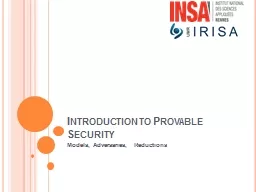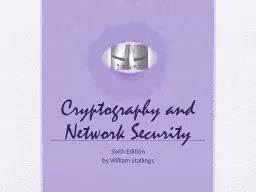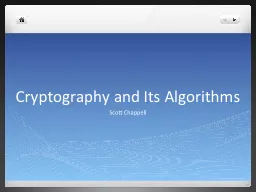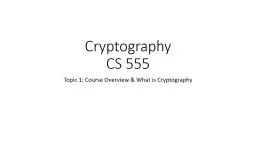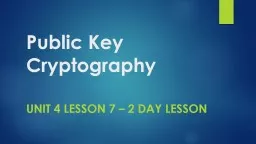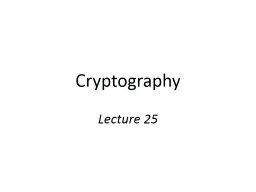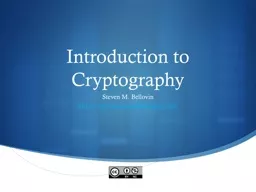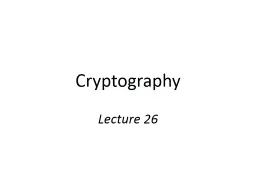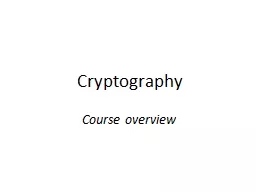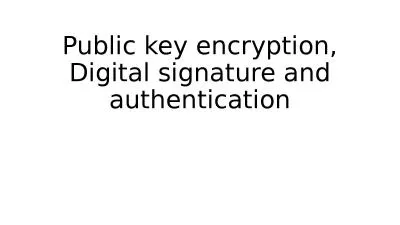PPT-Public Key Cryptography: Encryption, Signatures, FDH
Author : sherrill-nordquist | Published Date : 2016-11-03
The ROM FDH using the ROM From previous lecture Ciphers Stream ciphers many follow OTP PRG strategy Block ciphers work on plaintext of limited size block output
Presentation Embed Code
Download Presentation
Download Presentation The PPT/PDF document "Public Key Cryptography: Encryption, Sig..." is the property of its rightful owner. Permission is granted to download and print the materials on this website for personal, non-commercial use only, and to display it on your personal computer provided you do not modify the materials and that you retain all copyright notices contained in the materials. By downloading content from our website, you accept the terms of this agreement.
Public Key Cryptography: Encryption, Signatures, FDH: Transcript
Download Rules Of Document
"Public Key Cryptography: Encryption, Signatures, FDH"The content belongs to its owner. You may download and print it for personal use, without modification, and keep all copyright notices. By downloading, you agree to these terms.
Related Documents

